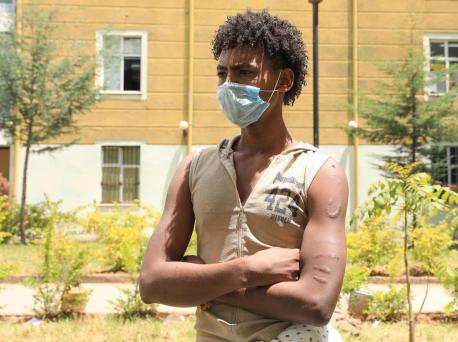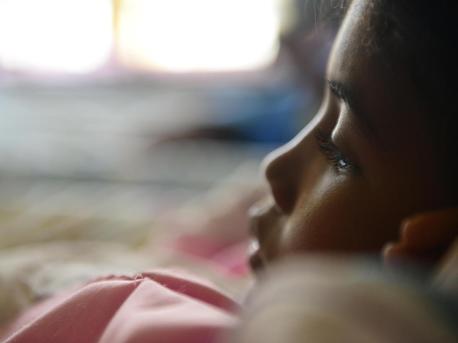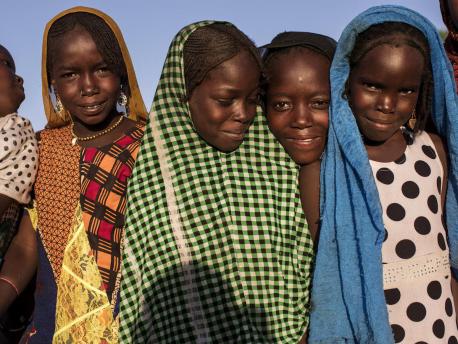
What's Next in the Fight Against Child Trafficking?
Anti human-trafficking advocates have made many gains in recent years, but we have a long way to go before we end this global scourge.
Recent Anti-Trafficking Successes
The past few years have marked many victories for advocates and courageous survivors of the illegal trafficking of boys, girls, women and men. (Trafficking includes violence, abuse, sexual exploitation, forced labor and the use of children as soldiers.) This month, which President Obama proclaimed as “National Slavery and Human Trafficking Prevention Month,” we should take a moment to celebrate how far we have come in such a short period of time.
In September 2016, for the first time ever, the U.N. made a survivor of child trafficking its Goodwill Ambassador for the Dignity of Survivors of Human Trafficking.
Human trafficking was explicitly mentioned in three of the world's Sustainable Development Goals, for instance, adding it prominently to the global agenda. Last month, the U.N. Security Council also unanimously adopted a resolution condemning human trafficking in the strongest terms.
In September 2016, an anti-trafficking activist and Nobel Peace Prize nominee, Nadia Murad Basee Taha — a Yazidi woman who survived trafficking and abuse by ISIS as a child — was appointed United Nations Office on Drugs and Crime (UNODC) Goodwill Ambassador for the Dignity of Survivors of Human Trafficking. This is the first time a survivor of child trafficking has ever received this distinction.
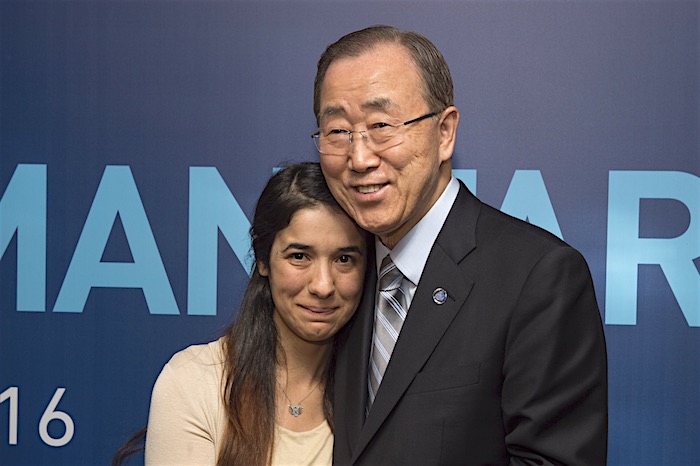
During the May 2016 World Humanitarian Conference in Istanbul, U.N. Secretary-General Ban Ki-moon (right) meets with Nadia Murad Basee Taha, a human rights activist and a survivor of abduction and torture by ISIS. © U.N. Photo #678905/Eskinder Debebe/2016
Countries and Governments Take Action, Too
The United States government also launched the U.S. Advisory Council on Human Trafficking made up of eleven survivor leaders. They lend their expertise to develop annual reports on federal government programs, serve as contacts for agencies interested in survivor input, provide recommendations on federal anti-trafficking policies and more. This year, they released the first U.S. government report on human trafficking written by survivors.
The number of countries with statutes criminalizing trafficking has increased from 18% in 2003 to 88% in 2016 according to a 2016 UNODC report. Analysis indicates that the longer legislation is in place, the higher the conviction rates for traffickers.
The Corporate World Joins the Fight
With increasing pressure from consumers and human rights groups, international brands are beginning to speak openly about how they are addressing slavery and trafficking in their supply chains.
With increasing pressure from consumers and human rights groups, international brands are beginning to address trafficking in their supply chains.
Groups such as Made in a Free World are helping companies to conduct risk assessment and eliminate exploitation through programs like “Forced Labor Risk Determination and Mitigation” — with 33 companies signing up in just a few years.
But the Struggle Against Trafficking Isn't Over
We still have a lot more hard work to do. In the coming years, we need to work harder to focus on survivor leadership, to pass effective policies, to convict traffickers, and to protect children, women and men who are victimized every day.
Right now, we are facing the largest movement of refugees and migrants since World War II. Civil wars, conflicts, environmental instability, famine and dire poverty are driving children and their families to flee their homes. Fifty million children globally — or 1 of every 200 children worldwide — are refugees. Often separated from their families, struggling for food and clean water and unable to access schooling, children on the move are increasingly vulnerable to trafficking.

Children Fleeing War Are Most at Risk
According to UNICEF, children are being forcibly recruited as child soldiers in the Syrian civil war. There have been reports documenting the abuse and exploitation of Syrian refugee children working in clothing factories in Turkey. In Greece, young children — many of them boys — are being forced to turn to commercial sex to survive.
But, as UNICEF Deputy Director Julian Forsyth reminds us, “We must remember that children, whatever their status, are first and foremost children. We have a duty to keep them safe in a healthy and nurturing environment.”
We must remember that children, whatever their status, are first and foremost children. We have a duty to keep them safe in a healthy and nurturing environment.
In another example of the vulnerability of child refugees, it appears that the commercial sex industry along the Mexican/Guatemalan border is largely driven by the mass influx of migrants — particularly adolescents — who are often fleeing gang violence in their home countries.
Anyone Can Be Affected
While refugee and migrant children are extremely vulnerable, trafficking is occurring in virtually every corner of our world. It can affect anyone who is lured by false promises or coerced by abuse. A new UNODC report released last month identified 500 different trafficking flows between 2012 and 2014. For example, trafficked children from 137 countries were identified in Western and Southern Europe. While cross-border trafficking occurs frequently, “...42 percent of the detected victims are trafficked domestically.”
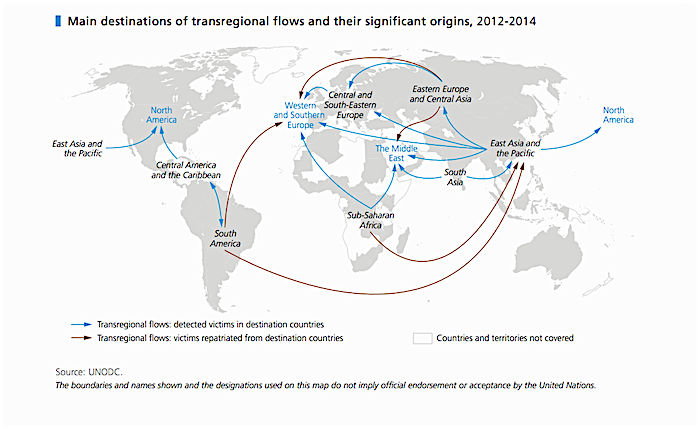
Women and girls are the most frequently identified victims of trafficking. However, in recent years, the trafficking of men and boys has been on the rise. Between 2012 and 2014, more than 1 in 5 trafficking victims identified were men. More than a quarter of all known trafficking victims in 2014 were children. In regions such as Sub-Saharan Africa and Central America, most of the victims are children.

How Can You Join the Fight?
While we have come a long way, there is much work to do. Today, about 85 million children are subjected to the most hazardous forms of labor. Some 5.5 million children have been trafficked into grueling work or commercial sexual exploitation. Tens of thousands of children are associated with armed groups in conflict-torn countries around the world. This is unacceptable. Every child has a right to protection from violence, abuse and exploitation.
Every child has a right to protection from violence, abuse and exploitation.
The world must urgently address the root causes that make children vulnerable to trafficking. We must also devise systems to protect children from falling victim to trafficking in the first place.
Let’s work together to build on the progress we have already made. As a global citizen, you have an important role to play in helping us put children first.
1. Pledge to stand with us to end trafficking, exploitation and abuse.
2. Become a conscious consumer and support brands that are acting to end trafficking in their supply chains.
3. Learn how to recognize if a child is being trafficked and call the National Human Trafficking Hotline to report suspicious behavior.
4. Donate to UNICEF's global child protection programs.
HOW TO HELP
There are many ways to make a difference
War, famine, poverty, natural disasters — threats to the world's children keep coming. But UNICEF won't stop working to keep children healthy and safe.
UNICEF works in over 190 countries and territories — more places than any other children's organization. UNICEF has the world's largest humanitarian warehouse and, when disaster strikes, can get supplies almost anywhere within 72 hours. Constantly innovating, always advocating for a better world for children, UNICEF works to ensure that every child can grow up healthy, educated, protected and respected.
Would you like to help give all children the opportunity to reach their full potential? There are many ways to get involved.




